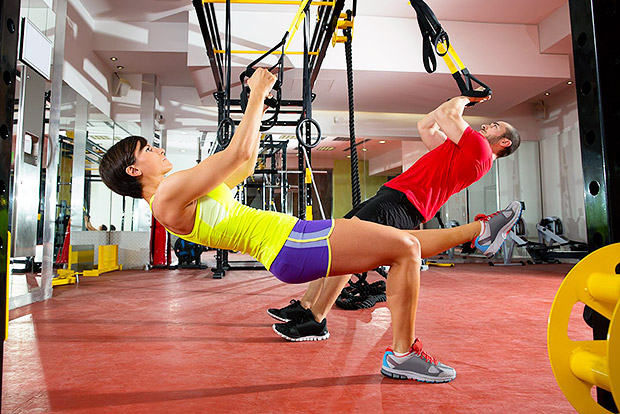
Balanced muscles help support joints and reduce injury. Well-designed resistance training and cardiovascular programs that strengthen opposing muscle groups can help keep your muscles balanced.
Causes of muscle imbalance
Muscle imbalances can result from overtraining one muscle group while undertraining another. For example, if running is your only exercise, your quads may become very strong, but you might experience relative weakness in your glutes and hamstrings over time. This could lead to knee pain or a strained muscle.
Your exercise preferences may also play a role. If you enjoy bicep training but dislike training your triceps, you may not give equal effort with each exercise, or you might skip the ones you dislike altogether.
Signs of muscle imbalance
Decreased muscle balance due to repetitive activities or a poor strength training program can take time to show. Sometimes it is visible in your posture. When standing, one hip or shoulder may be higher than the other. Your shoulders may be rounded, or your spine may be curved. Muscle imbalance can also result in pain, especially in the knee joint and lower back.
How to gain better muscle balance
Improving muscle balance requires a commitment to a well-rounded exercise program that equally trains all muscle groups. By expanding the focus of your workouts and recognizing training habits that cause imbalance, you can reduce the risk of injury, improve strength, and decrease pain.
- Cross-train: Reduce repetitive activities by adding variety to your workouts. For example, continue to run, but work in biking, hiking, or water sports to switch up the muscles you target.
- Don’t skip out: Avoid skipping strength exercises you don’t like. You could be ignoring important muscles. Talk with a trainer about alternatives that will effectively challenge each muscle group.
- Train each side: Sometimes stronger muscles on one side of the body will work harder, reducing the challenge to the same muscle group on your other side. Add exercises that strengthen one side of the body at a time. For example, instead of a barbell bicep curl with both hands, try single dumbbell curls with a weight in each hand.



 5 Ways to Burn 300 Calories this Weekend
5 Ways to Burn 300 Calories this Weekend
 The Best Home and Garden Chores for Burning Calories
The Best Home and Garden Chores for Burning Calories
 5 Tips for Making Exercise a Habit
5 Tips for Making Exercise a Habit
 Best Ways to Stay Safe during Exercise in Hot Weather
Best Ways to Stay Safe during Exercise in Hot Weather
 11 Tips for Exercise Motivation
11 Tips for Exercise Motivation
 Signs You Need to Increase Exercise Intensity
Signs You Need to Increase Exercise Intensity
 Mistakes to Avoid When Setting Fitness Goals
Mistakes to Avoid When Setting Fitness Goals
 Essential Gear for Starting an Exercise Program
Essential Gear for Starting an Exercise Program

 Pinterest
Pinterest RSS Feed
RSS Feed